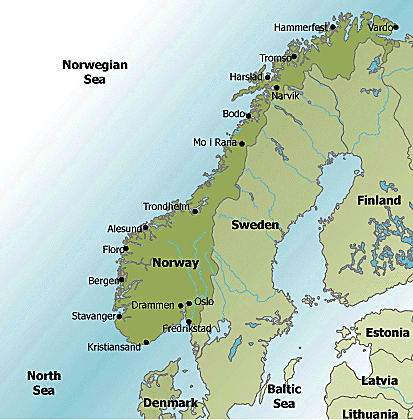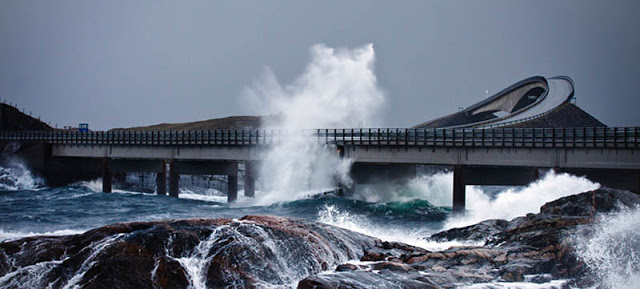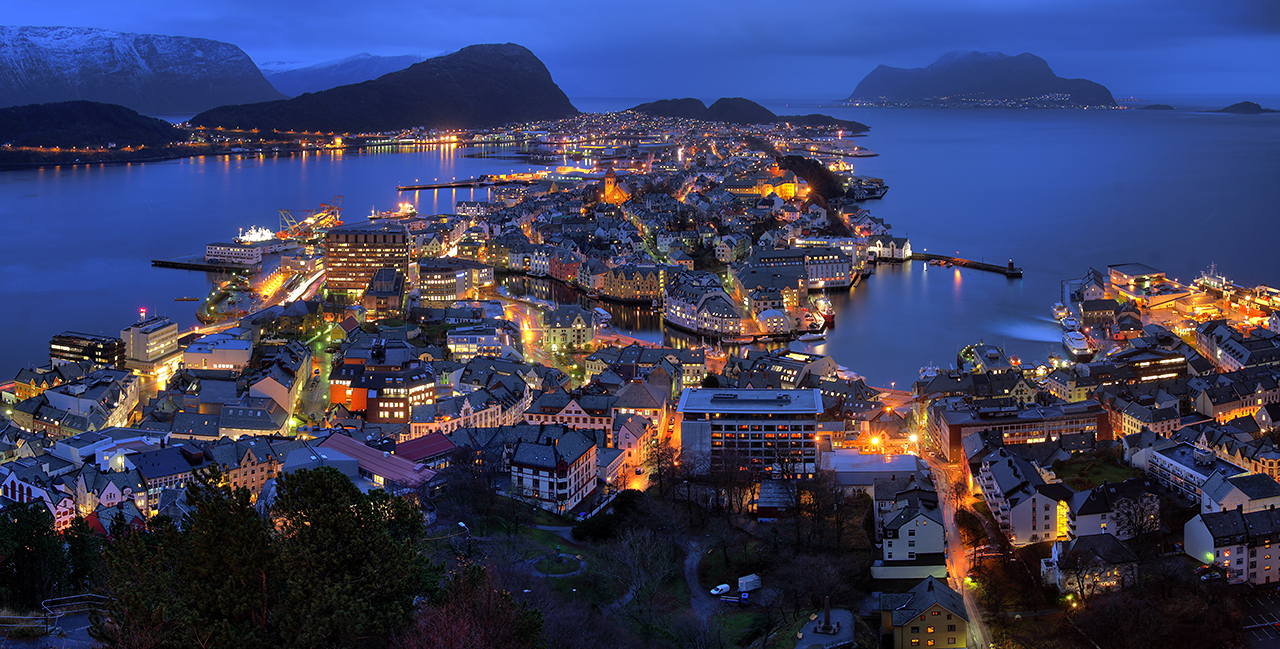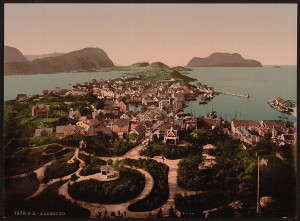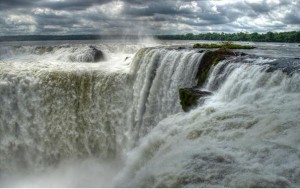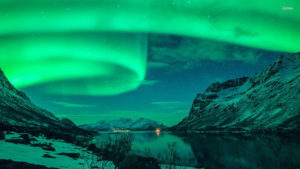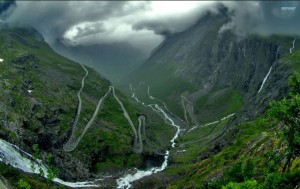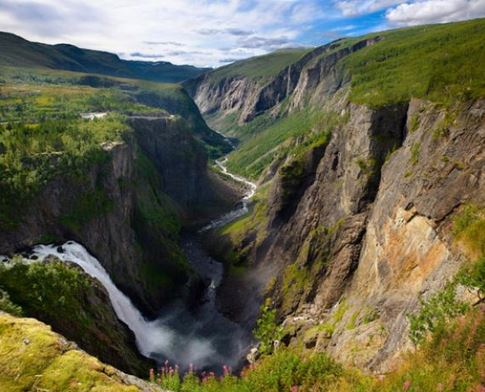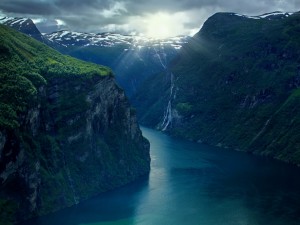So! The geography! I had just come off of two years of writing and researching Norse Mythology when I was looking over a map of Norway and Sweden. I was trying to imagine myself in the climate when I stumbled upon a Wikipedia Article entitled “Alfheim (Region)” and not “Alfheim (Mythology).”
Alfheim (Old Norse: Álfheimr, “elf home” or “land between the rivers.”) is an ancient name for an area corresponding to the modern Swedish province of Bohuslän and the eastern half of the Norwegian province of Østfold.
But wait…there’s more. I also learned that Jotunheim is real.
Jotunheimen (English: The Home of the Giants) is a mountainous area of roughly 3,500 km²[citation needed] in southern Norway and is part of the long range known as the Scandinavian Mountains. The 29 highest mountains in Norway are all in Jotunheimen, including the very highest – Galdhøpiggen (2469 m). Jotunheimen straddles the border between the counties of Oppland and Sogn og Fjordane.
This discovery threw me on my arse. Alfheim, Midgard, and Jotunheim were real!? At this point, I had Alfheim located north around Lofoten Islands in Norway. Kallan and Rune were walking north to get home. Now they have to walk south!? I was up to 90,000 words (my final would be 270,000 for the first two books). I had some work ahead of me.
This is Norway.
First thing you need to know about Norway. There are no cities. None. Only villages or towns. There are a three villages you must know about. Oslo, Trondheim, and Bergen (Not to be confused with my pompous overbearing Nord Lord, Bergen).
Until recently, Trondheim was the capital of Norway. Today, Oslo is the capital. Alesund is also a noteworthy village. Have I bored you yet? Okay, let’s get some pictures in here.
This is the Atlantic Road in Alesund Norway.
Stunning.
Alesund is amazing.
Most villages in Norway have a history that dates back to the Viking Era of 793. But Alesund is different, which is why I started with her. Alesund is built 100% with the Art Nouveau style. You know Art Nouveau. The Chrysler Building in New York is Art Nouveau. How did a 1,000 year old village come to exist in this modern style?
On 23 January 1904 all of Alesund was consumed in a fire. The entire village was destroyed and 10,000 Norwegians were found homeless.
Their recovery is just amazing. From Wikipedia:
Liberal aid was provided to Ålesund both from within Norway and from abroad. Kaiser Wilhelm II had been a frequent visitor to the area and expressed a personal concern for the plight of the population. As a result, much of the international help was from Germany, sent in Kaiser Wilhelm’s name. His first telegram was received while the fire was still being extinguished. He dispatched four ships loaded with personnel, food, medicine, materials for shelters, and equipment.
The town was rebuilt in the then contemporary Jugendstil (Art Nouveau). Modern historians have concluded that the fire was actually positive in terms of city development.[2] The pre-fire city centre was extremely crowded, consisting mostly of old and cramped wood housing with only rudimentary sanitary facilities.
Need I remind you this was a few years before World War I and eight years before the Titanic would sink.
This is the land of the Midnight Sun, the Northern Lights, and fjords. This is Norway, the land that launched every fantasy lover’s world and it is no wonder.
Learn more about Art Nouveau here.
The more research I did for Norway, the more I fell in love with her. I wanted to capture her in my book and give ode to the land that birthed our legends of the elves.
The lake stretched out like black gloss, reflecting the blue and purple ribbons of the Valkyrjur’s Lights overhead. The forest resumed where the beach ended and pine trees clawed the sky. A pair of clear, black eyes, framed in the mass of black hair stood vigilant alongside Astrid with reins in hand.
Here is another excerpt from Dolor and Shadow.
The light of the waning moon danced on the black water. The storm clouds had passed, taking with it, the fog and leaving behind the vibrant, green waves of Odinn’s lights that painted the clear, open sky.
“They shine differently here in Throendalog.” Rune said, raising his eyes to the sky.
Stunned by his impassiveness, Kallan stared forgetting her anger almost immediately.
“We should visit Lofot and Vargfot in the winter sometime up north, although I recommend going by boat,” he said. “The cliffs and mountains are merciless in the winter.”
The ribbons rippled.
“They are beautiful,” he whispered. “Some nights I would lie awake wondering why the spectacle isn’t accompanied by a battle cry. I would spend hours, walking all night beneath them, straining to hear their horses’ hooves beat the skies and Heimdallr’s horn leading them on. But they are silent.” Rune shook his head still staring at the sky. “They shouldn’t be silent.” – Excerpt taken from Dolor and Shadow (Tales of the Drui Book #1)
Literally, the mountains rise right out of the sea! Och! So beautiful!
From the northernmost ends of the world, over the snows of Jotunheim, down past the fjords of Midgard, the land of Alfheim lay. Her tall, ancient pines stretched across the grass plains riddled with rivers that intertwined through forests and lakes. Rich forests radiated the heart of Freyr’s land where secrets were buried within, secrets forgotten even by the Ljosalfar, who had dwelt in the land since it had formed.
To the east, Lake Wanern stretched on like the sea. During the long, cold winters, it iced over so thick, so solid, that kings fought their wars on the surface, which was strong enough to sustain thousands. When standing on the bank, looking out to the farthest corner, one could not see its end. Its primary inlet, the Klarelfr River, flowed from the north and split in two around the island filled with the Ljosalfar city, Gunir, before pouring into Lake Wanern.
At its southernmost end of the lake, the waters drained into the Gautelfr River. For days it flowed, ending at the sea of the Kattegat. There, the shallow waters clawed and chewed apart a ship’s hull ready to eat away the keel of a negligent crew. Sailors ignorant of the passing tides would find themselves run aground, or worse.
From the Kattegat, the mountains emerged, reaching high into the heavens where the peaks rose and vanished into the lowest clouds. Waterfalls cascaded from the mountains, dressing the rock in glistening streaks, the Dokkalfar’s most beloved waterfall being Livsvann that supplied Lorlenalin with fresh water.
There, the Dokkalfar built their mountain city, Lorlenalin, the White Opal. With stones of white glistening in the sun’s light, the Dokkalfar’s city distended from the precipice with a beauty equaled only to that of the Dvergar who lived in the caves beneath the mountains to the west. Homes and towers dressed the cliff face overlooking the Kattegat. Winding streets of white led deep into the earth, faceted with towering parapets and balustrades that extended into the clouds.
At the base of Lorlenalin and Livsvann’s end, the mountain met the sea. There, the Dokkalfar’s shipyard spanned the docks. There, they constructed great longships, shaped to cut through the waters. They formed their hulls to move with the sea, welcoming its power and using it rather than carving an unnatural path against the currents.
From the docks, the forests began and peppered the crag with speckled green. Stretching up and around the elevation where it joined with Alfheim’s wood and concealed Lorlenalin. Pines and maples still green with color lined the earth and twisted their way up to the main gates in the back of the mountain. – Excerpt taken from Dolor and Shadow (Tales of the Drui Book #1)
Read more from the “From Norway to Fantasy” series.

